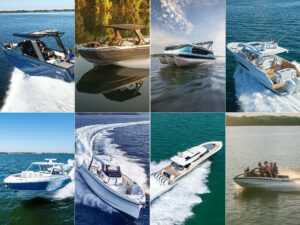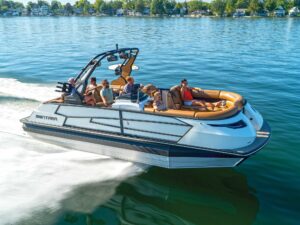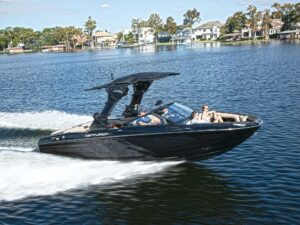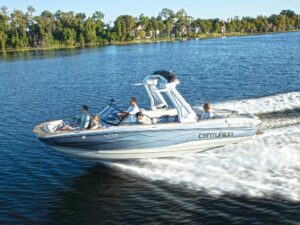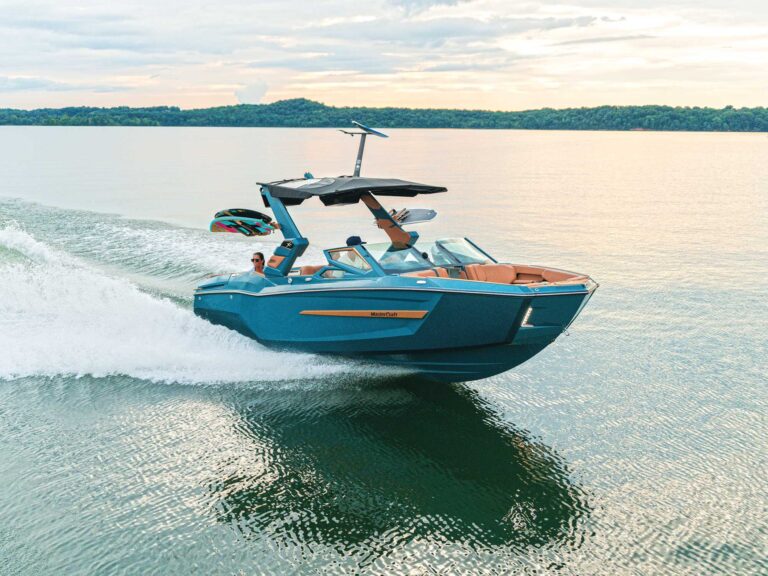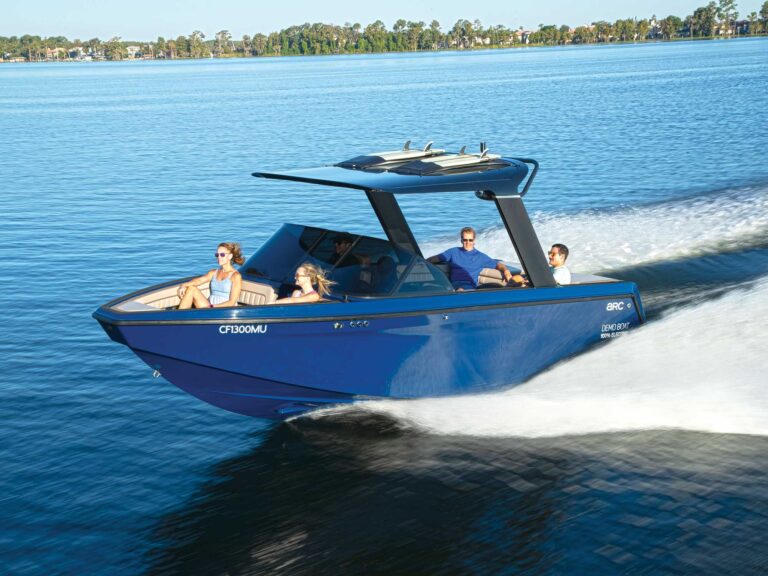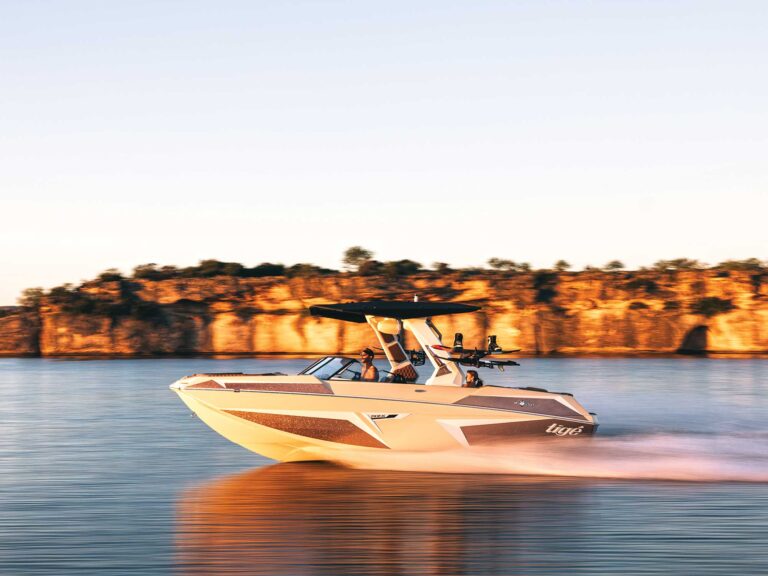
Mercury Marine’s recent foray into the electric-outboard market began with the Avator 7.5e, but as promised, both a higher-powered Avator 20e and 35e have now joined the lineup. Offering power that Mercury claims is comparable to its 5 and 9.9 hp gasoline-powered four-stroke outboards, motors are targeted at small aluminum fishing boats, skiffs, inflatable tenders, and even the occasional pontoon. Like the 7.5e, the 20e and 35e feature the same sleek form factor, simple toolless battery connections, and lightweight portability. The new motors also offer the possibility of greatly extending range by pairing up to four 2,300 Wh battery packs.
Unlike axial or radial flux motors, Avators use transverse flux technology, an industry first. Rather than wind copper wire around the stator teeth or pole, transverse flux motors position coils circumferentially around the axis of rotation to allow a three-dimensional flow of magnetic flux, axially through the stator, circumferentially through the rotor, and radially through the gaps in between. Advantages include increased low-speed torque and efficiency, maximizing battery life and range. Mercury says that the 20e, producing 2.2 kW of power at the prop shaft (comparable to just under 3 hp) delivers performance closer to its 5 hp gas four-stoke. The 35e, generating 3.7 kW of power (comparable to 5 hp), compares to the 9.9 hp gas model. Motors are touted as being quieter than its comparable internal-combustion counterparts. Reps note that the 35e is 63 percent quieter than a 6 hp four-stroke outboard at full throttle.

Unlike the 7.5e’s swappable internal battery, both the 20e and 35e require external, 2,300 Wh lithium-ion batteries. Developed in partnership with the Navico Group’s Mastervolt brand, the IP67-rated (dustproof/waterproof) batteries feature a tool-less, twist-lock power connection. A battery status button displays the current state of charge via four LED indicator lights. While the 20e can run on a single battery, the 35e requires two, linked through Mercury’s Power Center hub, to achieve full power. The Power Center can handle up to four individual batteries, linked in parallel, for maximum range. Battery space requirements with a power cable connected are 2 feet by 1 foot, 5 inches by 6 inches. Batteries can be stacked two high, as well as distributed throughout the boat to balance weight.

Battery life varies widely depending on power output and is decidedly nonlinear. High winds (20 to 25 mph) at Mercury’s Lake X test facility in Central Florida complicated our ability to capture best-case numbers on either motor. On a Mako Pro 13 Skiff outfitted with a 35e with 20-inch shaft, we noted a 3.8 mph speed at 500 watts with an accompanying run time of 9.2 hours and range of 34 miles, and 6.7 mph top speed with one-hour run time and 6-mile range at full 4,500 watts. An 11-foot Further Customs Laguna 330 paired with the 20e with 15-inch shaft produced a respectable 4.6 mph at 500 watts, resulting in run time and range of 4.6 hours and 21 miles. At 2,000 watts, speed increased to 5.8 mph, while run time dropped to 1.1 hours and range to 6 miles. As expected, torque was impressive. Vibration and noise were minimal, with the latter’s 66-decibel max more influenced by wind and hull slap.
Battery status—including charge percentage, estimated range and run time, speed, and current power—can all be monitored through Mercury’s full-color digital display. Integrated into the front of tiller models, nontiller units offer a choice of pedestal or flush-mounted remote displays. Mercury’s SmartCraft Connect Bluetooth module is pre-installed, allowing users to pull up similar data on the manufacturer’s smartphone app, including range estimates on a GPS map.
Read Next: Boat Test: 2024 Veer V13

There’s a lot of commonality between the larger motors and the 7.5e. Both models are available with either tiller or remote throttle controls. Tillers can be adjusted both horizontally and vertically to dial in a comfortable position. The direction of the throttle grip can also be reversed to accommodate right- or left-handed operators via display controls. The 41-pound drive unit is designed to be extremely portable and snaps in and out of a quick-release transom mounting bracket. The tiller can also be folded down to act as a carrying handle. A ratcheting trim system allows for easy adjustment to one of five preset trim angles with just one hand. Raise the motor fully to release. Shafts are available in 15-, 20- or 25-inch lengths on all three current models. Both the 20e and 35e share the same high-impact polymer 12.7-by-7-inch three-blade propeller.
As to charging, Mercury currently offers a choice of 230W or 520W smart chargers. The former will fully charge a single depleted battery in approximately 10 hours; the latter do likewise in about 4.5. Use the Power Center to charge up to four batteries simultaneously.

